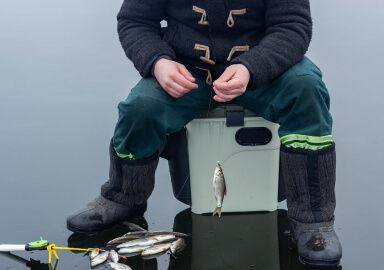Weakfish
Weakfish are a medium sized, shallow water fish of the eastern seaboard of North America.
View 4 listings
4
listings
–
price starting from
3
countries
–
to the nearest trip
Where and When?
Weakfish are found along the eastern North American seaboard from Nova Scotia southwards to northern Florida. They favour inshore, sheltered areas and are often found in estuaries and sheltered bays. Chesapeake Bay is a top area for weakfish and probably contains a large proportion of the population. There was a population crash in 2009 which was ascribed to heavy commercial and recreational fishing and an increased natural mortality rate. Subsequently, numbers have increased, but are still well below optimal levels.
As the weakfish spawn in estuaries and close inshore early in the year, fishing is best in these areas during this time. Later they are usually in deeper water where they are often found around structure and “drop offs”. While there is no “season” for this species they are rare in winter, particularly in the northern areas and, when they do appear, inshore fishing for them can become locally very popular.
About Weakfish
Weakfish (Cynoscion regalis), are a member of the “drum” family. They have elongate bodies that are dark brown with a green tinge that changes down the flank to a white belly. They have fairly small eyes, but a large mouth with many tiny teeth. The mouth is extremely soft in parts which accounts for its name and also for many hooked fish being lost. They can grow to 1 m. (33 in.) in length and up to about 9 kg. (20 lbs.) in mass. Most fish caught are, however, in the range 30,5 – 46 cm. (12-18 in.). They feed on a wide variety of organisms including small shoaling fish, such as anchovies and menhaden, and many invertebrates including shrimp, squid, worms and mollusks.
Weakfish sexes are similar, but the males, like many other members of the family, can “croak” and this is probably a method of attracting females. They “disappear” late in the year, probably migrating southwards and into deeper water and arrive back inshore in about April. Weakfish are often found in shoals, sometimes quite large ones and this can be either as a feeding mechanism or as defence against predators such as striped bass, bluefish and dusky sharks. They spawn in estuaries from April onwards and the young usually stay in estuaries for the first year before heading off into coastal areas.
How to Catch?
In spring weakfish can be caught in shallow waters in bays, estuaries, harbours and similar places from small boats or piers, jetties and suitable banks. Fishing for them is particularly popular in spring around Chesapeake Bay and Long Island in shallow water areas and, later in the season, boat fishing in slightly deeper water is usually better. Weakfish are seen as “shy, sensitive and selective” when feeding and this, combined with their soft mouths, means that fishing for them should be carried out carefully and stealthily. Light tackle is best, using smallish hooks, but a wide variety of natural and artificial baits can be used depending on many factors.
Drifting, using shredder crab or bloodworms, is popular early in the season, while later on the fish are often deeper in the water and need different techniques. Bass fishing equipment, often using bass lures like “jelly worms”, is popular and can be effective. Weakfish tend to stealthily hunt prey and then suddenly lunge forward and gulp it in. Most anglers prefer smaller natural baits carefully placed on the hook so that the weakfish does not become suspicious. While not one of the largest, sportiest or strongest fish, weakfish are locally very popular and can provide great fishing experiences and, often, an excellent meal.







